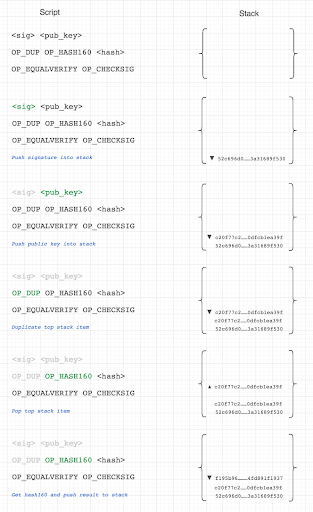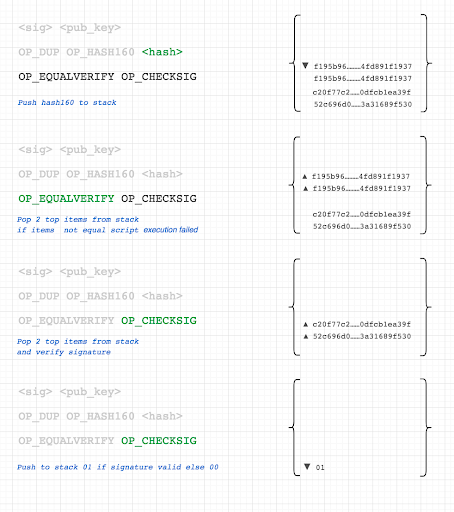Learning Bitcoin: signing the P2PKH input
This very article tends to explain the principles of an output P2PKHfunctioning in transactions of the Bitcoin network, as well as a point-by-point algorithm for signing this output option in the transaction input. The following is an example of signing P2KPH input by dint of Python.
-code1-
P2PKH script is one of the most common methods to transfer and store bitcoin. Now this version of the script accounts for the largest number of transaction outputs that are not spent. The address of this variant is the hash of the public key, which has been converted to base58 encoding, and to which the version byte variant and checksum have been added. For users, it does not have any visual features or differences from the addresses that were obtained from the P2PUBKEY variant.
-code2-
The hash of the public key (sha256+ripemd160) available to the public in the blockchain network replaces the public key for the protection against public key cryptanalysis. This protection option only works if the address is not reused. This version of the script is safer than the P2PUBKEY version, because the public key is available on the blockchain network until the first transaction originates from a specific address. If the address is reused after the first output operation, the security is compared to P2PUBKEY – this is due to the publication of the public key in the blockchain in the scenario of the signature of the original conducting operation.
To generate an expense transaction from this output option, use the signature script for it. The Signature scenario includes a signature and a public key. The input of the signed operation (the output of another operation that was not spent) is verified by executing the signature scenario, after which the P2PKH variant is launched.
-code3-
Point-by-point accomplishment of scenario:
The script has been completed. If the signature placed in 01 is valid, the value equals “True” and verification of the input of the operation is completed.
We have 1.3 tBTC on hand on mvJe9AfPLrxpfHwjLNjDAiVsFSzwBGaMSP and we need to transfer it to n4AYuETorj4gYKendz2ndm9QhjUuruZnfk
-code4-
First phase: create an unsigned operation with an empty signature script.
-code5-
Second phase: we are trying to get the hash of the signature of this currency transaction (we will resort to the SIGHASH_ALL type).
-code6-
Third phase: sign sighash with the private key.
-code7-
Fourth phase: Transfer the signature to the operation signature scenario and fill in the byte space with the sighash option.
-code8-
Last phase: Broadcast the operation to the network.
4484ec8b4801ada92fc4d9a90bb7d9336d02058e9547d027fa0a5fc9d2c9cc77
Example with python bitcoin library pybtc:
https://pybtc.readthedocs.io

